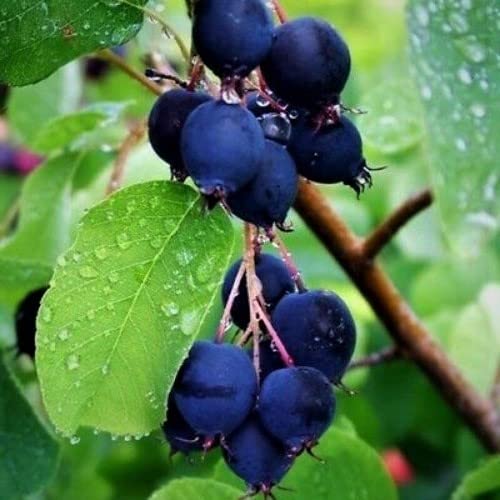As a professional gardener, these are the 5 trees I'd never plant in any yard ever again (and what I'd choose instead)
With the potential to cause damage and a mess, some trees are best kept out of gardens


Providing height and structure, trees are key not only to our gardens but are crucial for our ecosystems. Their attractive features, whether foliage, fruits, flowers or bark, enrich both our and the local wildlife's existence and play a vital role in reducing carbon dioxide.
However, not all trees are suitable for a domestic backyard. Aggressive and invasive root systems, adventurous suckers, self-seeding and even toxicity are just some of the issues I have had to manage over my career as a professional gardener.
Reinforcing Beth Chatto’s sage advice of ‘right plant, right place,’ these valuable, yet onerous experiences, have helped me choose 5 trees never to plant again in a front or back yard. Furthermore, it’s not just trees that can be invasive and destructive, as here are 5 plants I’ll never grow again.
5 trees never to plant again
Without prior knowledge or the opportunity to research first, it is all too easy to plant something that can potentially do more harm than good to your garden.
From invasive ground cover plants and thuggish and ugly shrubs never to grow again to the trees listed below, there are some things you might not want to grow, or grow with due caution if you do.
Staghorn sumac
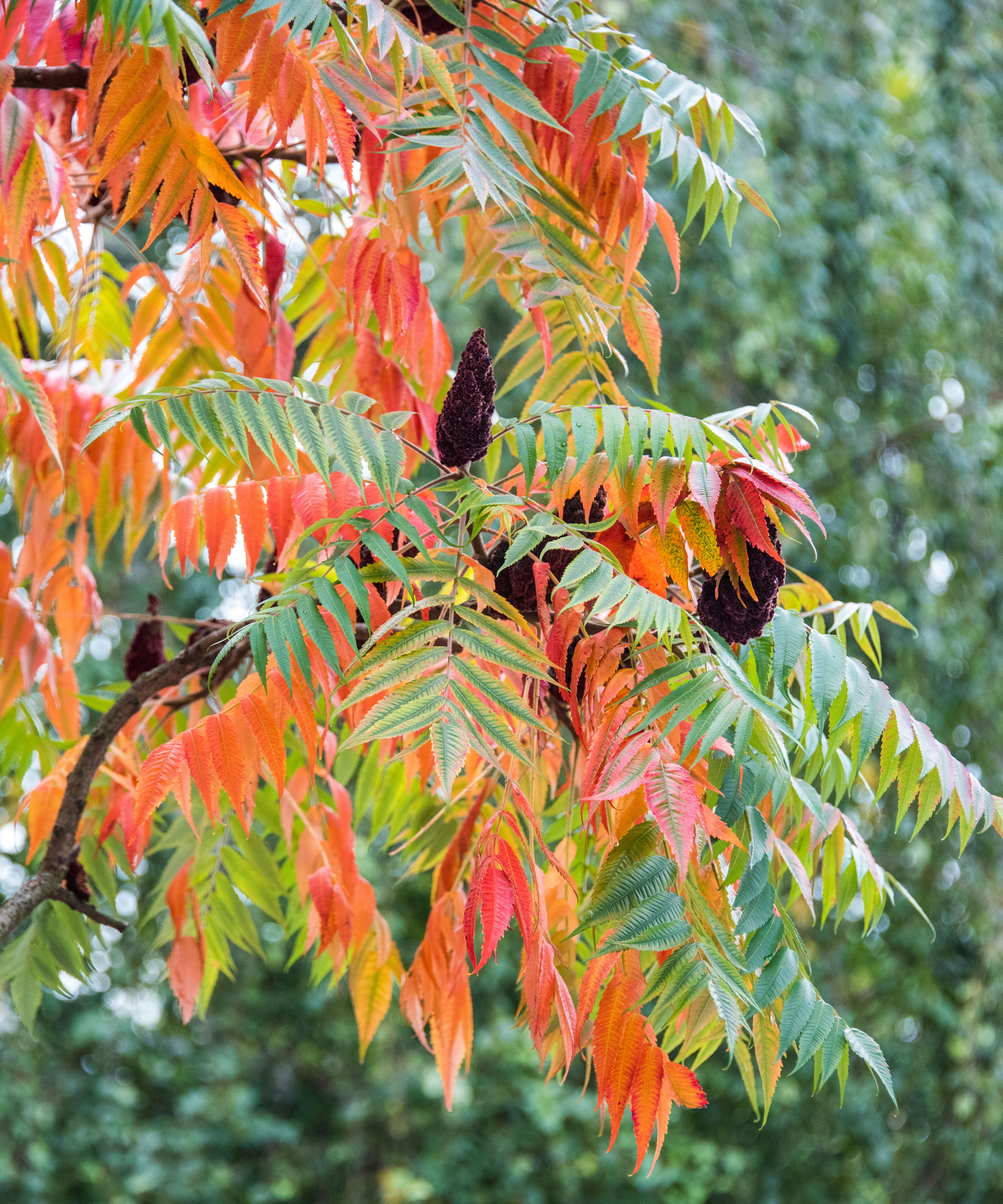
A large shrub or small tree, the staghorn sumac, Rhus typhina, is prized for its attractive foliage and stunning fall color. Growing to 25 feet tall, this deciduous North American native thrives in open woodlands and along roadsides, where it colonises with ease.
Providing food and a habitat for birds and pollinators, it is often incorporated into wildlife gardens, but is predominantly grown for its autumnal display and ability to prevent soil erosion.
Design expertise in your inbox – from inspiring decorating ideas and beautiful celebrity homes to practical gardening advice and shopping round-ups.
Unfortunately, the staghorn sumac has a suckering habit that can quickly lead to dense thickets. Considered invasive in several states, if left unmanaged, its vigorous growth can outcompete and shade out other native plants, leading to their demise.
Having managed a large private garden with a staghorn sumac in situ, I can attest to its ability to freely sucker and its potential to send up new growth well away from the original tree.
Instead, an often overlooked and understated tree is the Serviceberry or Amelanchier. Grown for its spring blossom and vibrant fall display, depending on the species, they can grow up to 30 feet tall and are generally suitable for USDA hardiness zones 4-9.
You can purchase Autumn Brilliance Serviceberry from Nature Hills.
Cherry Laurel
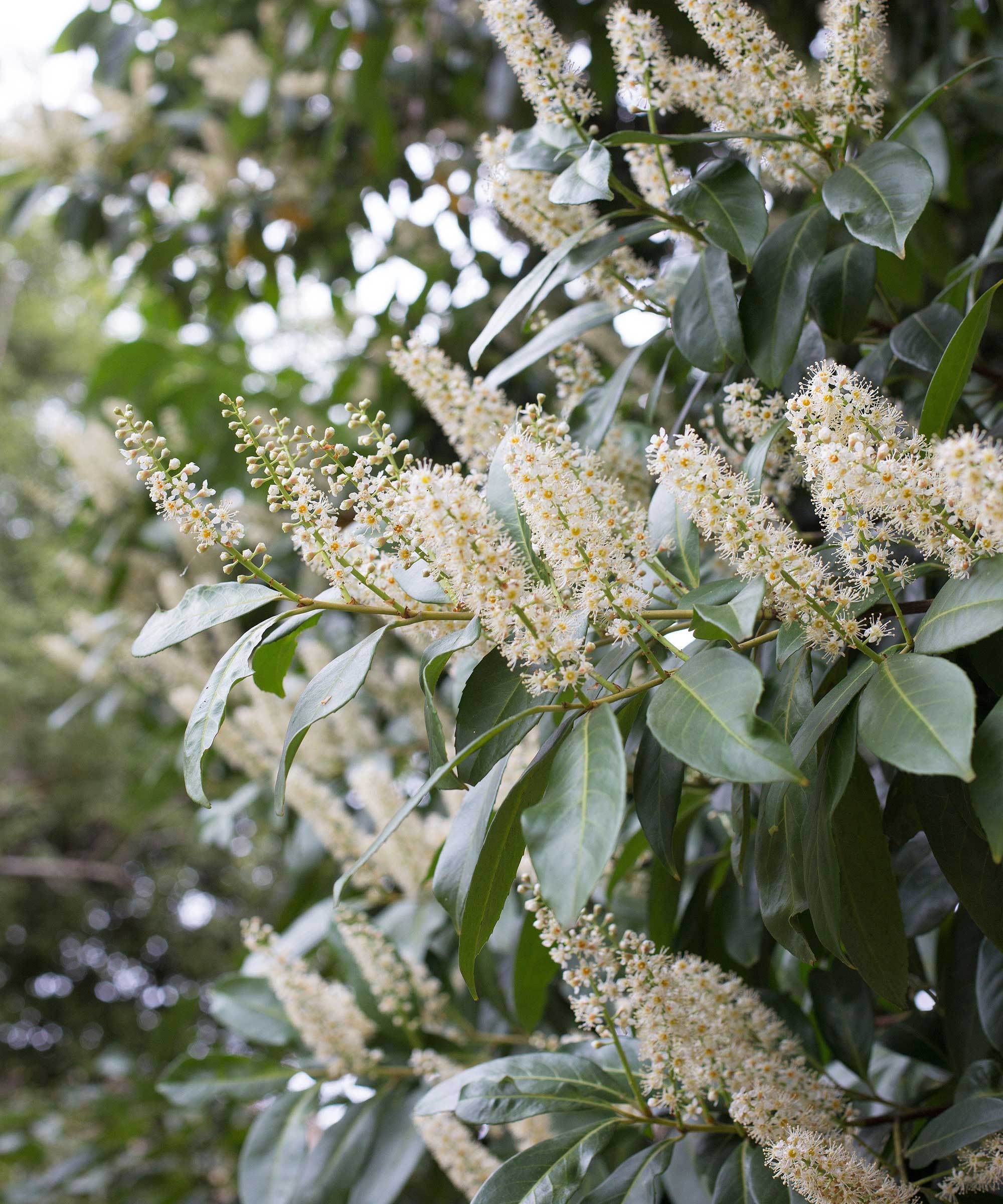
Grown for its rapid growth and dense evergreen foliage, the cherry laurel, Prunus laurocerasus, is often valued for its ability to provide effective garden screening and privacy. Producing up to 3 feet of new growth each year, this large, fast-growing shrub or small tree can reach 30 feet tall and wide.
Dark green, glossy leaves and fragrant white flowers in the spring make it an attractive choice, just as long as you are committed to pruning laurel regularly.
Considered an invasive in parts of the Pacific Northwest, and a hedge to avoid due to its potential to shade over and displace other plants, cherry laurel is also toxic to pets and humans.
With memories of arduously hand-pruning great lengths of laurel hedging so as not to leave an untidy finish at a previous garden I managed, it is certainly a tree I would never plant again.
With so many more manageable trees available, why not try American holly, or Ilex opaca, as it is botanically known. Suitable for growing down to USDA zone 5, this slow-growing evergreen tree generally reaches a final height of 30 feet and forms an attractive pyramidal shape.
American holly trees are available from Nature Hills.
Black walnut
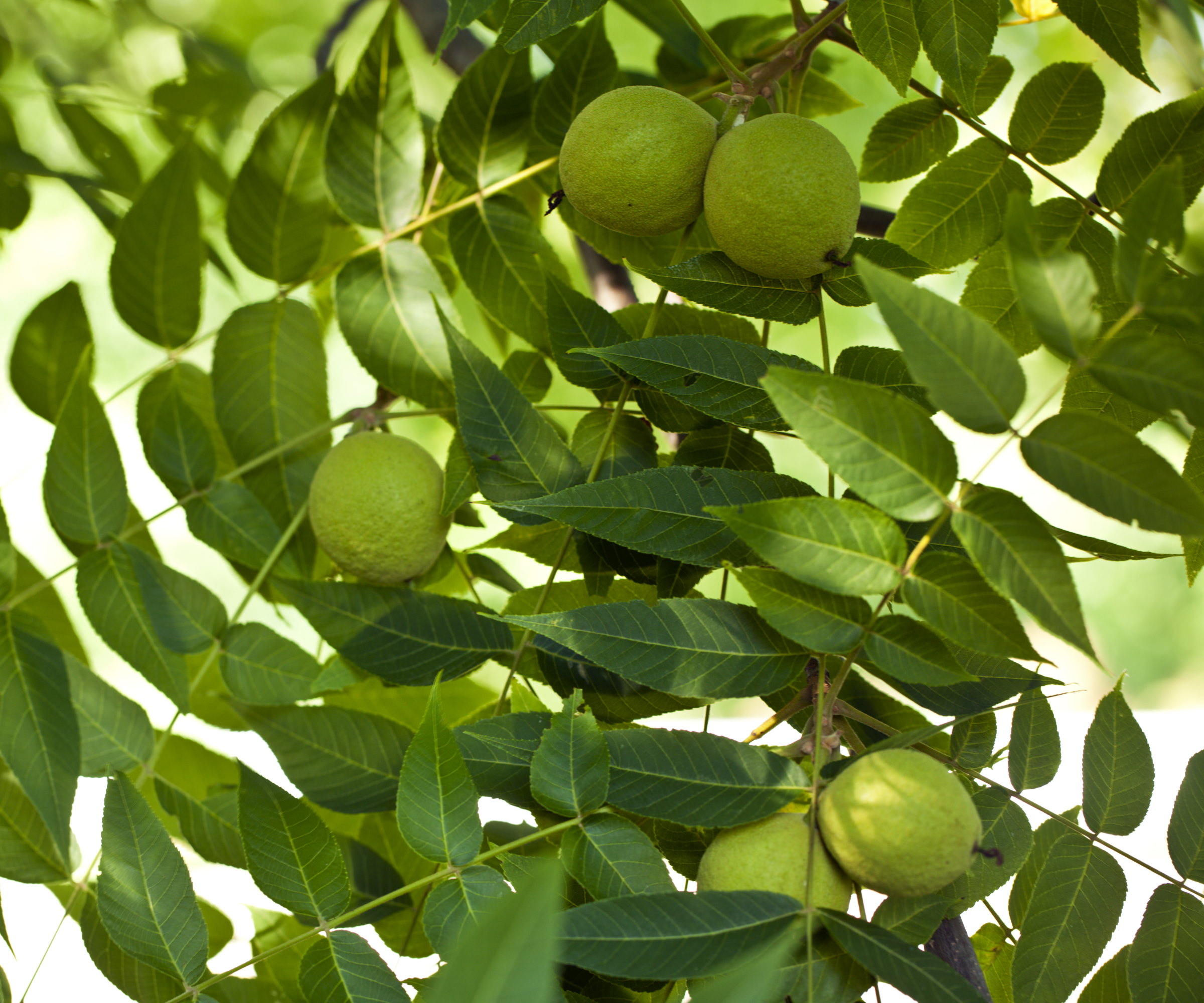
Reaching a maximum height of around 100 feet, the black walnut tree, Juglans nigra, is a prized tree, not only for its stature and fruits, but also for its hardwood. A deciduous tree, the black walnut develops attractive dark gray bark and pinnate compound leaves that emerge green before turning yellow and dropping in the fall.
Another North American native, a mature Juglans nigra can produce an impressive black walnut harvest in late September or October.
Undoubtedly beautiful, this vigorous and large tree is not without its problems. Firstly, to keep it productive and maintain its shape, regular walnut tree pruning is required. Bleeding sap when cut, the black walnut tree is best pruned in late winter, when the tree is dormant.
Secondly, and more unusually, the black walnut tree produces a chemical called juglone, which is toxic to many plants. Existing in the tree's foliage, fruits and roots, juglone can extend beyond the tree’s canopy and inhibit growth in other plants that are sensitive to it.
Having inherited a black walnut tree growing next to a kitchen garden, I admired it greatly for being a beautiful specimen, but found planting around it very limiting due to the toxic juglone it emitted.
With members of the nightshade family and fruits, especially apple trees, being some of the most susceptible to juglone, what could be grown in the vegetable garden was hugely restricted.
Even though black walnut trees are quite rightly cherished, these aforementioned reasons, along with the mess created when the fruits fall, have put me off planting one in a small garden again.
A flowering cherry tree with its spring blossom and autumnal foliage color could be a great alternative. Suited to USDA zones 5-8 and reaching a maximum of 8 to 50 feet tall, there is a space to grow one in even the smallest of gardens.
Mount Fuji Japanese Flowering Cherry Tree is available from Nature Hills.
Weeping willow
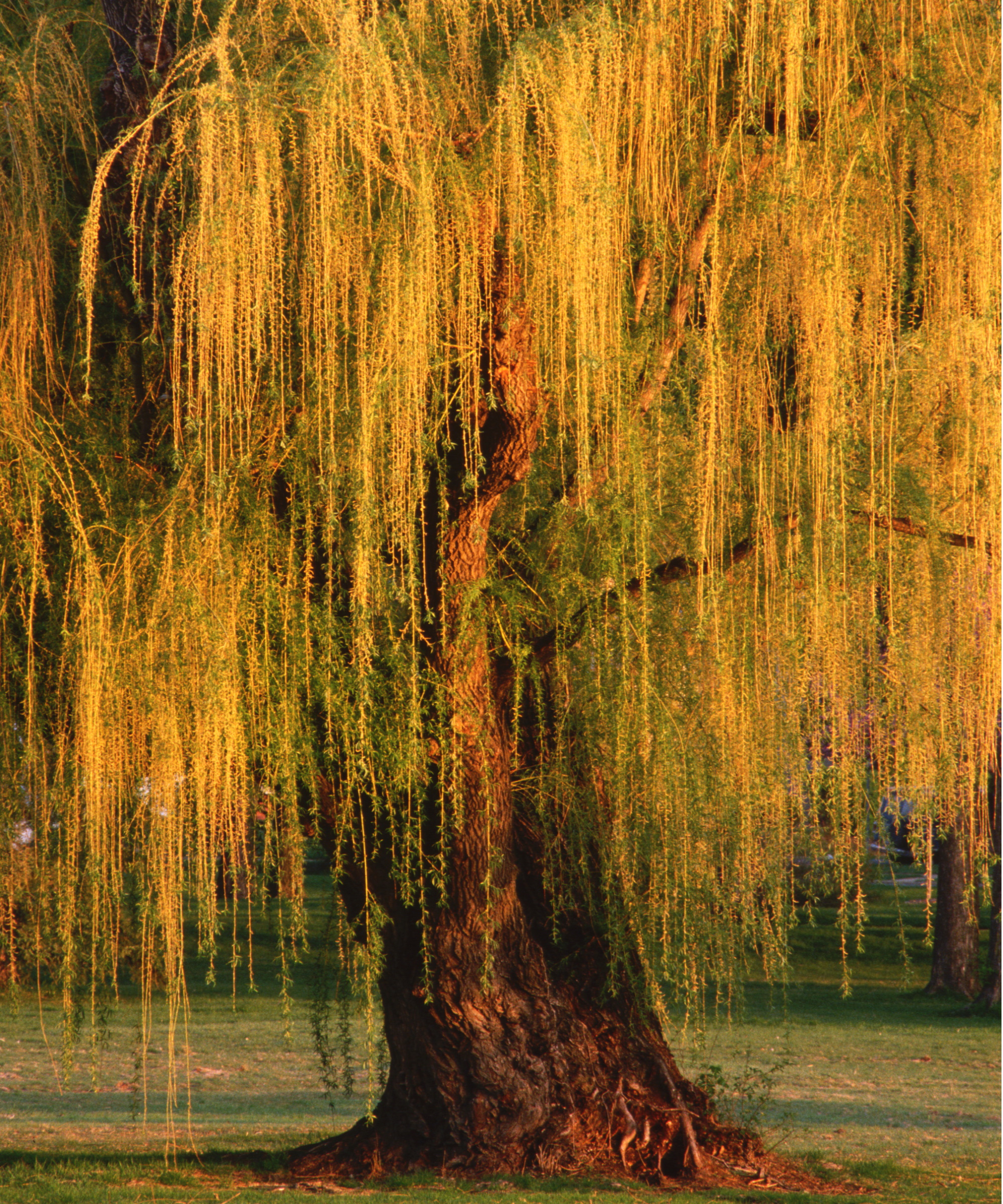
A fast-growing tree and a full and dense canopy make the weeping willow a great shade tree for sitting under and a great choice for screening an unwanted view. Salix babylonica, as it is also known, is highly appreciated for its elegant drooping branches and long, narrow leaves that rustle in the breeze.
Thriving in moist conditions, especially near rivers and ponds, weeping willows can tolerate waterlogged soil and even help absorb excess water.
A deciduous tree, with a maximum height and spread of around 50 feet, means that the weeping willow is generally unsuitable for a domestic backyard. That, combined with its rapid growth and extensive moisture-seeking root system, which can damage underground drain and sewer pipes, makes it a tree to avoid planting close to a house.
A weeping willow growing alongside a riverbank in one of the gardens I used to work at was one of our favorite spots for a break or rest out of the midday sun. However, considering the size it matured into and the maintenance it needed to clear its fallen leaves, branches and twigs, I would not be in a hurry to plant one.
As an alternative, the native Eastern redbud, Cercis canadensis, is illuminated by its pink blooms in early spring and before its green heart-shaped foliage emerges. Suitable for growing in zones 4-9, it grows to a maximum height of 30 feet, but can be easily managed.
You can purchase Eastern redbud trees from Nature Hills.
English oak
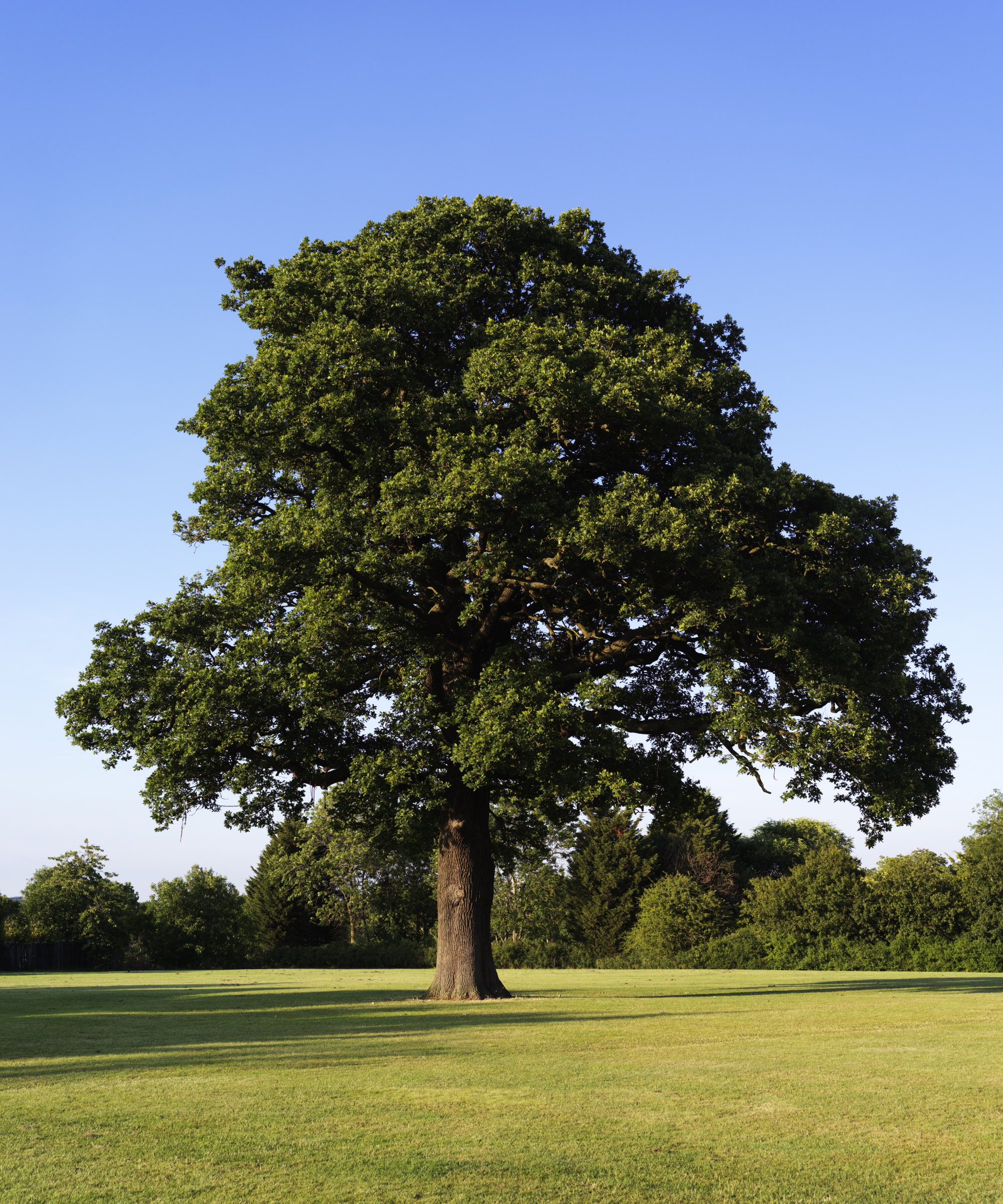
Growing up to 130 feet tall and 80 feet wide, English oaks, Quercus robur, are beautiful and majestic trees. A haven for wildlife and efficient at carbon dioxide absorption, they are also a great choice for providing shade. Grown from a mere acorn, English oaks need a lot of space and mature into trees that should never be planted in a small yard.
Requiring regular maintenance, pruning oaks is necessary to maintain their health, prevent damage from falling branches and to keep them looking their best. Furthermore, from past experience, you’ll need to set aside time to clear its fallen leaves, acorns and small branches come the fall.
However, you also need to be aware of its roots. Spreading extensively, an oak's roots have the potential to damage sidewalks, driveways and even foundations. In the United Kingdom, oaks growing on clay have been known to cause subsidence due to their roots absorbing so much moisture that the clay soil shrinks.
There is no doubt that oaks are wonderful trees when planted where they can thrive unhindered. But for a front or backyard, a kousa dogwood, Cornus kousa, with its spring flowers, fall color and height up to 30 feet tall, makes for a wiser choice. Suitable for growing in zones 5 to 9, this Kousa Dogwood Tree is available from Nature Hills.
Choosing and planting a tree is a big decision that can benefit generations to come. But choosing the wrong tree might, as you have just read, have unfortunate consequences down the line. For some other more suitable small tree choices, here are the best trees to plant close to a house.

Edward Bowring is a horticultural therapist and writer with a passion for gardening and the health benefits that it has to offer. With a background in occupational therapy, Edward worked within health care settings where he witnessed first-hand the healing power of gardening and has managed and run therapeutic kitchen and community gardens ever since.

